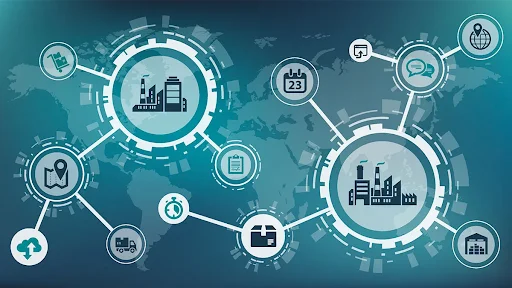In the fast-moving world of logistics, managing operations manually can often be slow, prone to errors, and highly inefficient. As businesses grow, the need for an integrated, streamlined system becomes more pressing. From Manual to Automated is where logistics software solutions come in. They provide automation that can simplify the complexities of logistics and transportation management, allowing companies to operate more efficiently and respond quickly to customer demands.
If your business is still relying on manual systems, consider the benefits of transitioning to logistics software solutions. Let’s explore how automation can help companies improve performance, reduce costs, and stay ahead of the competition.
What Are Logistics Software Solutions?
Logistics software solutions are technology-driven tools designed to streamline and optimize supply chain, inventory, and transportation management. These solutions can automate tasks like route planning, order processing, inventory management, and real-time tracking of shipments. The ultimate goal is to improve operational efficiency and enhance customer service by providing a centralized system for all logistics activities.
The Importance of Transitioning from Manual to Automated Systems
Manual processes in logistics can lead to inefficiencies such as human errors, delayed responses, and missed opportunities. Automated logistics software solutions replace these outdated methods with tools that provide real-time updates, data accuracy, and enhanced control over your operations. The shift to automation can significantly reduce the operational burden, allowing businesses to focus on strategic goals and innovation.
Key Benefits of Switching to Logistics Software Solutions
For businesses still operating with manual systems, transitioning to logistics software solutions offers several compelling advantages.
1. Increased Efficiency and Productivity
Manual processes in logistics are often slow and require significant human input. Tasks such as data entry, inventory management, and route planning are all prone to errors when done by hand. With logistics software solutions, these tasks are automated, leading to faster processes and improved efficiency.
- Real-Time Tracking: Automated systems enable you to track shipments, inventory, and vehicles in real-time, reducing the need for manual checks.
- Optimized Routing: Transport and logistics software solutions can automatically calculate the most efficient routes, saving time and reducing fuel costs.
- Streamlined Inventory Management: Automated systems can update inventory levels in real-time, allowing for better stock control and fewer stockouts.
By automating these tasks, businesses can save significant time, reduce labor costs, and enhance overall productivity.
2. Enhanced Accuracy and Reduced Errors
Human errors are inevitable in manual processes, especially when dealing with large amounts of data and multiple moving parts. Logistics software solutions, on the other hand, offer a higher level of accuracy in data management.
- Automated Data Entry: Transport and logistics software solutions automatically pull data from various sources, eliminating the need for manual data entry, which reduces the likelihood of mistakes.
- Improved Forecasting: With better data accuracy, businesses can forecast demand more accurately, preventing overstocking or understocking issues.
- Fewer Operational Mistakes: Whether it’s in billing, order processing, or inventory tracking, the chances of errors are significantly reduced when you use logistics software solutions.
This reduction in errors not only improves operational efficiency but also enhances customer satisfaction by ensuring that products and services are delivered as promised.
3. Cost Savings
While there is an initial investment in logistics software solutions, the long-term cost savings are substantial. From Manual to Automated shift from manual to automated systems leads to better resource utilization, less wasted time, and fewer costly mistakes.
- Labor Savings: Automation reduces the need for manual labor, as tasks like tracking shipments, calculating routes, and managing inventory are handled by the software.
- Lower Operational Costs: Transport and logistics software solutions can optimize transportation routes, reducing fuel consumption and overall transportation costs.
- Inventory Management Efficiency: Better inventory tracking and forecasting can help reduce storage costs and minimize the risk of overstocking or understocking.
By switching to logistics software solutions, businesses can reduce costs associated with human error, inefficiencies, and missed opportunities.
Streamlining Logistics Operations with Automation
Logistics software solutions help businesses gain better control over their logistics operations by integrating various functions into one seamless system. Automation also plays a key role in improving visibility and communication across the supply chain.
1. Streamlined Supply Chain Management
The ability to manage every aspect of the supply chain from one platform is a key benefit of logistics software solutions. These solutions integrate multiple operations—such as procurement, order fulfillment, inventory management, and customer service—into one system. This provides greater visibility into the entire process, making it easier to track and manage each step in the supply chain.
- Centralized Data Management: A single software solution stores all relevant data, making it easy to access and manage.
- Better Supplier Coordination: By automating procurement and tracking, businesses can better coordinate with suppliers and ensure timely deliveries.
2. Improved Customer Satisfaction
In today’s competitive market, customer satisfaction is paramount. Logistics software solutions help businesses improve the customer experience by offering faster and more reliable services.
- Faster Response Times: With real-time data, businesses can respond quickly to customer queries, track shipments, and adjust delivery schedules as needed.
- Accurate Delivery Estimates: By utilizing automated routing and tracking systems, transport and logistics software solutions can provide precise delivery timelines, enhancing customer trust.
- Better Communication: Automated systems can send customers updates on their orders, tracking information, and estimated delivery times, improving transparency.
The result is a smoother customer experience, with fewer delays and better communication.
3. Real-Time Visibility and Decision-Making
One of the most significant benefits of logistics software solutions is the ability to provide real-time data that empowers businesses to make better decisions.
- Instant Access to Data: Transport and logistics software solutions provide instant access to critical information like inventory levels, shipment status, and transport availability, enabling businesses to make informed decisions quickly.
- Proactive Problem Solving: With real-time alerts, businesses can proactively address potential delays or issues, ensuring a smooth operation.
This ability to act quickly in response to real-time data can significantly improve logistics performance and minimize disruptions.
The Future of Logistics Software Solutions
The logistics industry is continuing to change, and so are the software solutions that power it. As customer expectations rise and technology advances, the demand for advanced logistics software solutions will only grow.
The Integration of AI and Automation
Future logistics software solutions will likely integrate more AI and machine learning capabilities, enabling businesses to predict future demand, optimize routes, and make smarter operational decisions. Automation will also become more widespread, from the automation of vehicle maintenance to the use of drones for last-mile delivery.
The Shift Towards Cloud-Based Systems
Cloud-based logistics software solutions are becoming increasingly popular due to their ability to provide real-time access to data from anywhere in the world. Cloud solutions allow businesses to scale quickly, collaborate seamlessly, and ensure that their logistics operations are always up-to-date.
Additionally, logistics and transportation software solutions are enabling businesses to maintain high levels of flexibility and control over their operations, even in the most competitive markets.
Conclusion
Switching from manual systems to logistics software solutions is not just about keeping up with technology; it’s about taking advantage of tools that can dramatically improve the efficiency, accuracy, and cost-effectiveness of your logistics operations. By automating routine tasks, reducing errors, and gaining real-time insights, logistics software solutions give businesses a competitive edge in the ever-changing world of logistics.
Investing in logistics software solutions helps streamline operations, improve customer satisfaction, and drive growth. With the ability to automate complex tasks and reduce costs, transport and logistics software solutions offer a clear path to enhanced productivity and profitability. It’s time to move beyond manual systems and unlock the potential of logistics software solutions for your business.
Unlock ideas that spark growth and innovation in our latest related post today!






